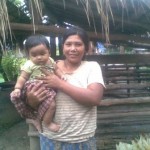 A year ago my wife and I were struggling to find ways to teach our children the importance of helping those in need, and lamented the fact that despite our knowing there are millions of families around the world who need help, we felt virtually powerless to make any significant difference in their lives. And although we were grateful for the opportunity to make monetary donations to the Church’s humanitarian program, we felt that writing a check quite wasn’t enough to help our children understand the challenges so many of the world’s families face; nor did it allow our children to witness the results of our family’s contributions.
A year ago my wife and I were struggling to find ways to teach our children the importance of helping those in need, and lamented the fact that despite our knowing there are millions of families around the world who need help, we felt virtually powerless to make any significant difference in their lives. And although we were grateful for the opportunity to make monetary donations to the Church’s humanitarian program, we felt that writing a check quite wasn’t enough to help our children understand the challenges so many of the world’s families face; nor did it allow our children to witness the results of our family’s contributions.
 At the time, I was reading Muhammad Yunus’ book, Banker to the Poor, in which he relates how he, as an Economics professor in Bangladesh, helped create a micro-lending bank that makes small loans to the poor so they can quit their exploitative jobs, start their own businesses, and climb out of poverty. Yunus explains how traditional aid programs, which typically rely on the UN and government agencies as “middle men” to administer aid, have a proven track record of gross inefficiency and failure spanning several decades. His micro-lending operation, and many others like it, cut out the bureaucratic middle-men so that the money intended for the poor actually makes it to the poor. By working with impoverished communities around the world, Yunus learned first-hand that the poor are willing and able to work, but simply lack the capital needed to start their own businesses. By providing loans that must be repaid, rather than giving away handouts, Yunus and micro-lenders like him “teach a man to fish” by enabling the poor to break out of the poverty cycle and support themselves.
At the time, I was reading Muhammad Yunus’ book, Banker to the Poor, in which he relates how he, as an Economics professor in Bangladesh, helped create a micro-lending bank that makes small loans to the poor so they can quit their exploitative jobs, start their own businesses, and climb out of poverty. Yunus explains how traditional aid programs, which typically rely on the UN and government agencies as “middle men” to administer aid, have a proven track record of gross inefficiency and failure spanning several decades. His micro-lending operation, and many others like it, cut out the bureaucratic middle-men so that the money intended for the poor actually makes it to the poor. By working with impoverished communities around the world, Yunus learned first-hand that the poor are willing and able to work, but simply lack the capital needed to start their own businesses. By providing loans that must be repaid, rather than giving away handouts, Yunus and micro-lenders like him “teach a man to fish” by enabling the poor to break out of the poverty cycle and support themselves.
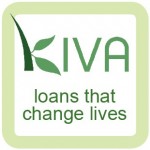 When I discussed all this with a friend, Stephen Wellington, he told me Kiva.org was exactly what I was looking for. And he was right. Kiva builds on the work of Yunus and others by taking their micro-lending model to the next level. Using the Internet, Kiva enables regular people like you and me to make micro-loans as small as $25 to people all over the world who want to lift their families out of poverty by starting their own businesses.
When I discussed all this with a friend, Stephen Wellington, he told me Kiva.org was exactly what I was looking for. And he was right. Kiva builds on the work of Yunus and others by taking their micro-lending model to the next level. Using the Internet, Kiva enables regular people like you and me to make micro-loans as small as $25 to people all over the world who want to lift their families out of poverty by starting their own businesses.
Here’s a typical example of how Kiva works: a family in Cambodia grows rice, but is barely subsisting. They could greatly increase their rice production if they had a new plow and some fertilizer, but they don’t have the money for it. So they submit a loan application for $600 to a local mico-lending agency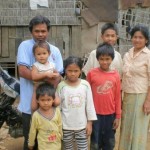 in Cambodia that partners with Kiva. The family’s loan request is then posted on Kiva, and that’s when the loan fund-raising begins. With just a few mouse clicks, regular folks like you and me all over the world can pool our contributions of as little as $25 each to reach the $600 total that the family needs. Once the loan money has been raised, Kiva sends it to the local micro-lending agency, which disburses the loan funds to the family in need. Every month, the family makes small re-payments to the local micro-lending agency in Cambodia, which are sent back to Kiva and put in your Kiva account. When you receive a monthly repayment, you can either cash out and get your money back, or re-loan the money to another family in need.
in Cambodia that partners with Kiva. The family’s loan request is then posted on Kiva, and that’s when the loan fund-raising begins. With just a few mouse clicks, regular folks like you and me all over the world can pool our contributions of as little as $25 each to reach the $600 total that the family needs. Once the loan money has been raised, Kiva sends it to the local micro-lending agency, which disburses the loan funds to the family in need. Every month, the family makes small re-payments to the local micro-lending agency in Cambodia, which are sent back to Kiva and put in your Kiva account. When you receive a monthly repayment, you can either cash out and get your money back, or re-loan the money to another family in need.
This month is our family’s one-year anniversary with Kiva. A year ago we spent a Family Home Evening with our children reviewing loan requests on  the Kiva website. Because we were new to Kiva and therefore a little uncertain about its reliability, we decided to loan an amount of money that we thought could make a difference in a few families’ lives, but that was small enough that we could accept losing completely if it all turned out to be a scam. So we took $500 and divided it amongst a few families from a few different countries: the Cambodian family already mentioned; a mother in Peru needing funds to expand her door-to-door grocery business; a father in Mongolia needing funds to repair his mini-bus for his transportation business; a father in the Philippines needing funds to expand his small hog farm; a mother in Senegal needing funds to buy ice-cream making equipment, etc.
the Kiva website. Because we were new to Kiva and therefore a little uncertain about its reliability, we decided to loan an amount of money that we thought could make a difference in a few families’ lives, but that was small enough that we could accept losing completely if it all turned out to be a scam. So we took $500 and divided it amongst a few families from a few different countries: the Cambodian family already mentioned; a mother in Peru needing funds to expand her door-to-door grocery business; a father in Mongolia needing funds to repair his mini-bus for his transportation business; a father in the Philippines needing funds to expand his small hog farm; a mother in Senegal needing funds to buy ice-cream making equipment, etc.
As we received the monthly re-payments, we immediately re-loaned the money in $25 increments to other families. We also received Kiva video updates from the field about the families we were assisting. (See an example here.) These video updates provided our children with a window to the world, showing them how families around the world struggle to support themselves, and helping our children develop a greater awareness of, and desire to help, those in need.
So what were the results of our family’s first year experimenting with Kiva? With just our $500 initial contribution of loan funds, which we re-loaned to other families in $25 increments as loans were repaid, we were able to:
- Make a total of 40 loans . . .
- in a total amount of $1,275 . . .
- to families in 21 different countries (Azerbaijan, Bolivia, Cambodia, Dem. Rep. of Congo, Dominican Republic, Ghana, Indonesia, Kenya, Mongolia, Nicaragua, Pakistan, Paraguay, Peru, Philippines, Rwanda, Senegal, Tajikistan, Tanzania, Togo, Uganda, and Ukraine) . . .
- $783 of which has already been repaid . . .
- with a delinquency rate (late payments) of 7.38% . . .
- and a default rate of 6.25 % (higher than the Kiva average of 1.65%) . . .
- meaning our total loss after one year has been only $25 (one loan in the Dominican Republic).
Our family’s contribution has been just one tiny drop in the ocean of Kiva lending. Just last week on Kiva: 3,629 new lenders joined; 11,207 lenders made a loan; 2,344 entrepreneurs were funded; and $752,850 was lent, at a rate of one loan every 23 seconds.
Overall, our family has fallen in love with the concept of micro-lending, because we’ve discovered that by re-lending funds as they are repaid, we were able to do $1,275 worth of good with our $500 initial contribution of loan funds. Over the coming years, the amount of good that $500 initial contribution does will only multiply. And with a loss of only one $25 loan that defaulted, we’ve learned that Kiva, its field partners, and its borrowers are trustworthy enough to continue lending to them for years to come.


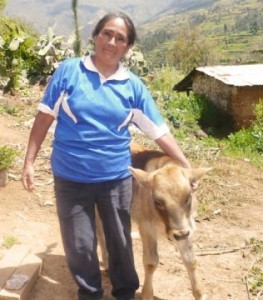
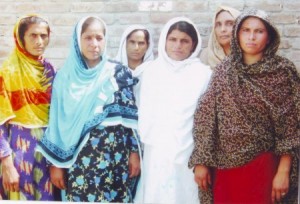
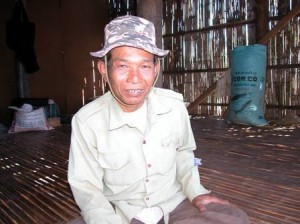

Comments 17
I’m intrigued. Do the borrowers have to pay interest on the loans? What happens if they can’t repay it?
Thank you for that!
My family has given to Yunus’ Grameen bank for several years now but this sounds so much more interactive and personal.
Great post, Andrew. My family has been looking into microlending options, as well. Your experiences may just tip us into action.
Thank you Andrew. This is phenomenal. My wife and I often talk of how we can possibly help those around the world other than donating money to some bloated, top heavy aid organization, most of which is going to pay administrative costs. This seems to be just the ticket. We will definitely check it out.
I really think this has a lot of potential. I have not really heard about it before but I think I am gonna give it a go. Thanks for sharing.
I love it!!
Awesome.
I was reading about micro-loans, specifically to women in India. The article talked about the fact that when the men in the family made any extra money, it went proportionately into vice spending such as gambling, prostitution and alcohol. When investments were made in women-run businesses, extra money went into education, nutrition and reinvestment into the business through hiring additional workers or new equipment.
I will check out kiva – great tip, Andrew! We’ve been sponsoring children through CCF for about 10 years (also a very worthy cause IMO), but I have been greatly intrigued by the micro-loan concept. It seems more prone to sustainable growth.
I’ve been loaning through Kiva for almost two years. I recommend it. I like knowing a little about the people I have loaned to. If you are interested in friendly competition there are “teams” on Kiva such as BYU, Kiva Mormons Kiva Mormons http://www.kiva.org/community/viewTeam?team_id=96 . Kiva Mormons is the second largest giving religious organization between The Flying Spaghetti Monster and Kiva Catholics.
I’m a big fan of Kiva and have helped fund probably around 20 loans the past couple of years. Love it!!!
thumbs up.
My family has been doing microlending for the last 2-3 years now. It is awesome, and a great way to “share the wealth.”
Corrupt governments are responsible for true world poverty, unless we can do something about that, all of our efforts are in vain.
Dude, you can microlend to our family anytime 🙂
If I’m not completely mistaken, didn’t he speak at our commencement back in ’98?
If you like Kiva, you should check out Heifer International.
Keep up the great work!!
I can’t speak to the effectiveness of Kiva, it seems very worth while and I’ll probably donate, but there are organizations who do look into the effectiveness of charities. One is http://www.givewell.net/ They did not recommend Kiva or Heifer, but not for the reasons you would think.
I’ve been a kiva lender for a couple of years. I do think it’s a great idea for a way to lend to the working poor in the world. However, I want to point out some downsides, particularly things that have become apparent as kiva grows.
They’ve added currency risk into the equation. I and many other kiva lenders don’t feel qualified to assess the risks, so I only loan to those with currency risk already covered by the Microfinance Institute involved (MFI). Unfortunately, there are fewer and fewer of these from which to choose.
My original idea was to build up a rotating fund by adding just one new loan per paycheck. I was able to do this, but only by ignoring kiva’s multiple requests for donations along the way. I would pay 10% on new money up front, but each time we recycle repaid loans, they want another 10%, plus they ask for 10% when withdrawing funds. So basically the overhead starts to add up, and eat out any rotating fund you can build. If you donate every time kiva suggests, you will eventually end up with all your fund donated. Next they began asking for 15%, during the economic downturn, saying they were hurting. That made me begin to question kiva’s long term viability. The central idea that you could gradually let arithmetic progression increase your efforts over time proved to be somewhat chimeric.
Though there are rules against MFIs putting certain dodgy business types up on kiva, for instance those involving prostitution, arms sales, or illegal drugs, there are still some fairly unsavory businesses that ARE allowed, particularly cockfighting (often marked simply as poultry, in other words blood sport disguised as agriculture). Because kiva refused to add cockfighting to their list of things they won’t support, I and several friends paused all new lending on kiva.
Most of the defaults that kiva has experienced have come from irregularities of the MFI partners, including fraud, failure to disburse the amount loaned, inflation of loan amounts and of loan durations. Kiva has reacted to these events with more partner oversight, however, there’s no guarantee that more of these fraudulent activities at MFIs won’t occur. In fact, they almost certainly will. There are many hardworking honest MFI partners, and I don’t want to take away from them, but I think potential lenders should be aware that they are taking risks not just from the borrower, and from instability in the country, which we all are willing to underwrite, but also from fraud in the local microfinance organizations, of which we’re much less tolerant. For instance, the case of Mifex in Ecuador was particularly egregious, and no real push from kiva to try to recover the funds was forthcoming. Mifex absconded with $500k of kiva lenders’ money, and is still apparently in business. Kiva seems only weakly to be pursuing any options to try to get any money back.
Though kiva finds it easy to take money from your account using paypal in a matter of seconds or minutes, withdrawing the money later can take up to 3 weeks. So far they’ve always finally let go of the money but the lack of symmetry here I find disturbing and unnecessary.
Funds left idle in a kiva account for a year may at some point be simply taken by kiva for their operating expenses. They don’t seem to have a strong feeling institutionally of “this is our money” vs. “this is our lenders’ money” but seem to feel entitled in a way that tends to disturb me.
Lately they’ve started experimenting with not translating the loan write-ups. This leaves the lender guessing what the business might be for, since Babelfish and Google language tools do an abysmal job of translation.
Other very unprofessional events can be seen when they roll out new features on the website. There are often severe bugs that we users do our best to help identify and notify the IT team of. For a company who handles $80M in funds, it does not inspire confidence to see how lackadaisical they are in their accounting and web systems.
In many ways kiva acts as though the supply of new lenders and lender money is endless. So far this has been true. However they show in various ways that the lenders’ experience is a low priority. That’s why I’m wondering if kiva has jumped the shark. I’m not putting any of my money in anymore, and I’m withdrawing from my personal account.
For more information about all things kiva, see the kivafriends.org forum. http://www.kivafriends.org/
Please don’t let me discourage you from loaning through kiva. I just want to give warning where it’s due, so that people go into it armed with the knowledge that they should have. Kiva is supposed to be all about transparency. The pros of lending through kiva are easy to see. Just be aware that there are also some cons.
I discovered Heifer International last year too- it’s a charity, not micro-lending, but people who get animals, then give some from the next generation of animals to others who need help.
Microlending is a great concept. However, there is a dark side to microlending that people do not like to talk about. Kiva (and other microlenders) do not have the resources to place employees (ie bankers) in every third world country to monitor the microloans that are made. In addition, the people receiving these loans do not have bank accounts, internet access, or paypal. When microborrowers make a payment on their loan, they typically hand cash to someone who works for Kiva.
Kiva partners with local “bankers” and essentially hopes for the best that those collectors are not the equivalent of third-world loan sharks. In the United States we have unusually strong laws that protect borrowers from lenders. Third-world countries typically have no such laws. If a borrower fails to make payments, the lender has the right to cause you physical harm or take anything the borrower owns as payment, including members of the borrower’s family.
While Kiva, and most microlenders do everything they can to prevent such collection practices it is unrealistic and idealistic to believe that abuses do not happen, or that their low default rate is not at least indirectly the result of cruel borrowing laws. Kiva spends a great deal of time trying to convince people that such practices do not happen in their organization, but when I looked into it several years ago, their presentation was more rhetoric than research. Kiva simply cannot afford to monitor the collection and borrowing practices for even a significant portion of their loan portfolio.
This is not to say people shouldn’t participate in microlending, just be aware that it is not all butterflies, bubbles, and cupcakes. That part of it should also be taught in FHE.